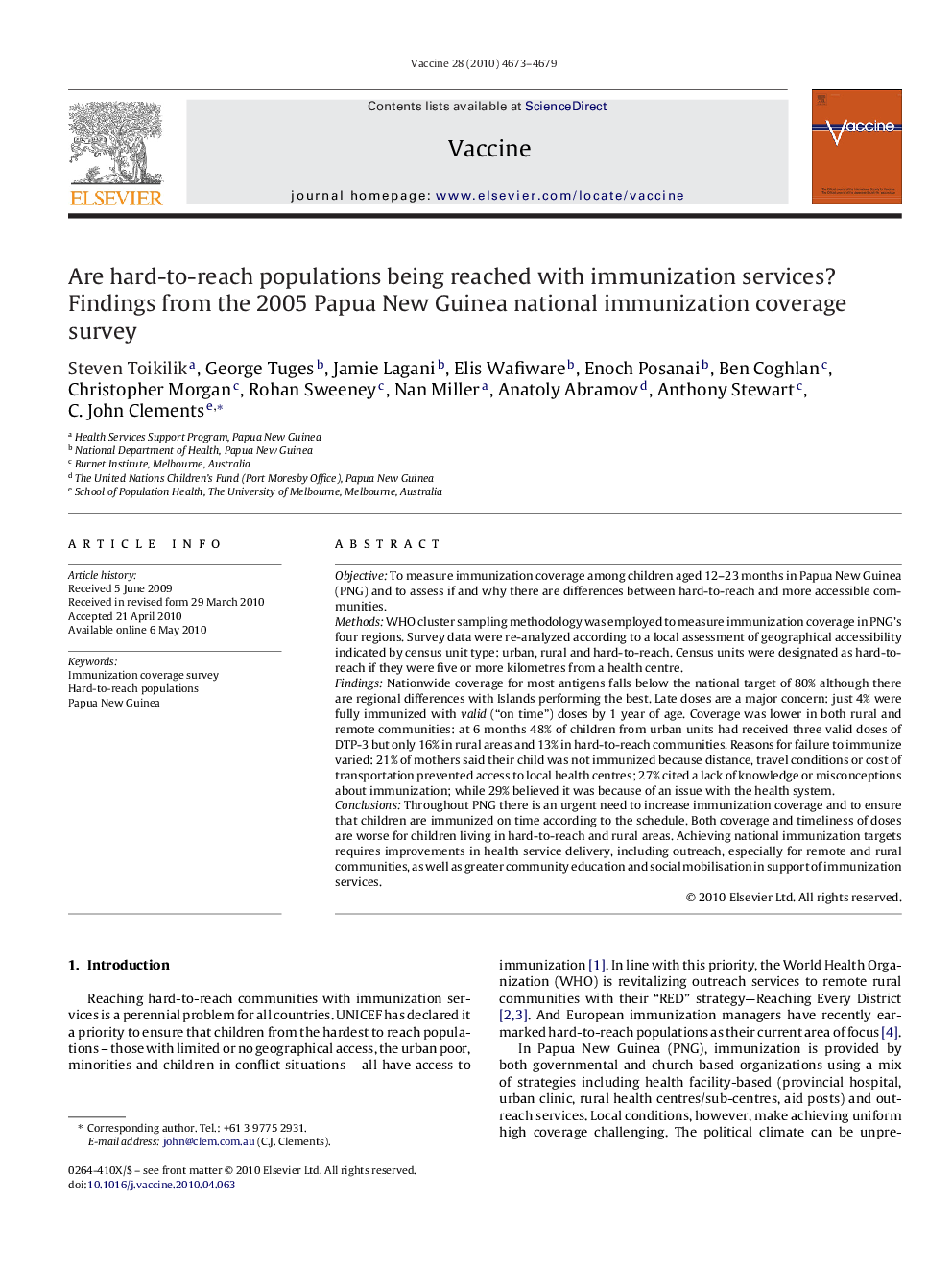| Article ID | Journal | Published Year | Pages | File Type |
|---|---|---|---|---|
| 2404591 | Vaccine | 2010 | 7 Pages |
ObjectiveTo measure immunization coverage among children aged 12–23 months in Papua New Guinea (PNG) and to assess if and why there are differences between hard-to-reach and more accessible communities.MethodsWHO cluster sampling methodology was employed to measure immunization coverage in PNG's four regions. Survey data were re-analyzed according to a local assessment of geographical accessibility indicated by census unit type: urban, rural and hard-to-reach. Census units were designated as hard-to-reach if they were five or more kilometres from a health centre.FindingsNationwide coverage for most antigens falls below the national target of 80% although there are regional differences with Islands performing the best. Late doses are a major concern: just 4% were fully immunized with valid (“on time”) doses by 1 year of age. Coverage was lower in both rural and remote communities: at 6 months 48% of children from urban units had received three valid doses of DTP-3 but only 16% in rural areas and 13% in hard-to-reach communities. Reasons for failure to immunize varied: 21% of mothers said their child was not immunized because distance, travel conditions or cost of transportation prevented access to local health centres; 27% cited a lack of knowledge or misconceptions about immunization; while 29% believed it was because of an issue with the health system.ConclusionsThroughout PNG there is an urgent need to increase immunization coverage and to ensure that children are immunized on time according to the schedule. Both coverage and timeliness of doses are worse for children living in hard-to-reach and rural areas. Achieving national immunization targets requires improvements in health service delivery, including outreach, especially for remote and rural communities, as well as greater community education and social mobilisation in support of immunization services.
